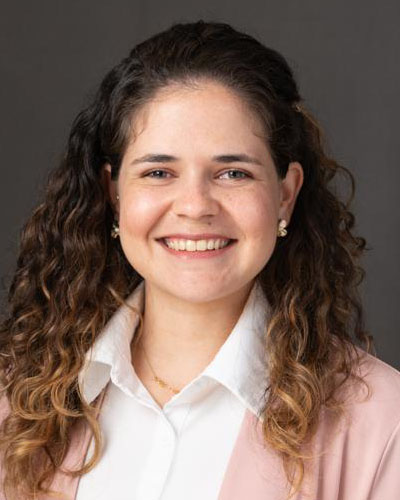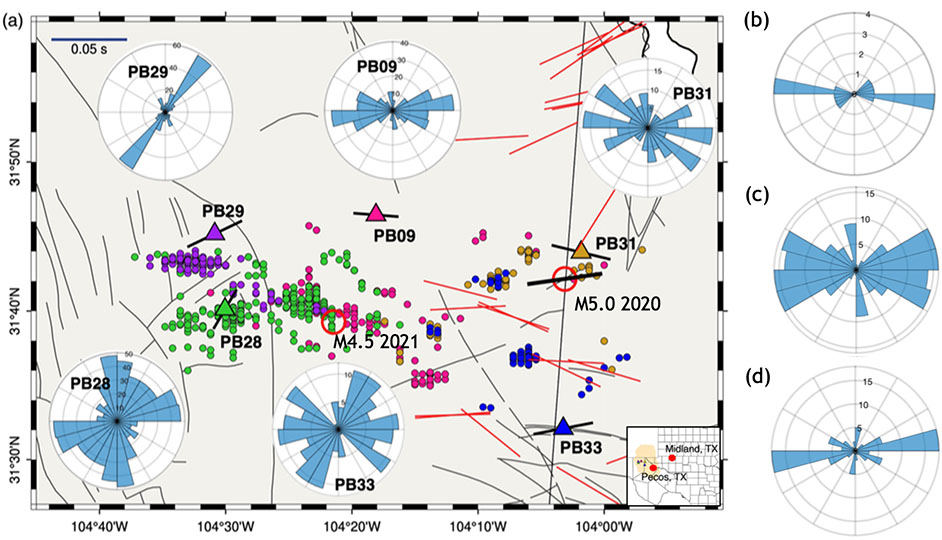Doctoral Student Veronica Guzman Develops New Methods to Show Wastewater-induced Seismicity Caused by Increase in Pore Pressure
Veronica Guzman, a Ph.D. student working with Dr. Aibing Li, has been conducting a research project on mapping stress change in the Delaware Basin in West Texas. The study is funded by the State of Texas through the University of Texas Bureau of Economic Geology TexNet Seismic Observatory and the Center for Integrated Seismicity Research.

The northwestern Delaware Basin has experienced a sharp increase in seismicity in the past three years, including one M5.0 earthquake in March 2020 and one M4.5 earthquake in March 2021. The rise in seismicity, emerging with the increase in industrial activities, has been attributed to wastewater injection and hydraulic fracturing. In this study, Guzman conducted shear-wave splitting (SWS) analyses from local earthquakes in the northwestern Delaware Basin to understand the increasing and intensifying seismicity in this area.
SWS refers to the phenomenon of the splitting of a polarized shear wave into two shear waves, one faster than the other, in an anisotropic medium. The splitting is caused by the preferred alignment of cracks in the subsurface. The fast shear wave is parallel to the cracks, and therefore, its orientation indicates the maximum horizontal stress direction. A temporal variation in fast polarization orientation could signify a change in the fracture system caused by stress or pore pressure increase.

Guzman performed shear-wave splitting analyses using data from more than 4000 earthquakes from 2019 to 2021 recorded at five TexNet stations in the northwestern Delaware Basin. Over 840 robust SWS parameters, the fast polarization orientations and the delay times, were obtained from this study. The orientations of fast shear waves from individual events vary in a broad range, indicating a complex fracture system in the upper crust, even though the averages are consistent with the local fault strikes or the maximum horizontal stress (Figure 1).
At station PB09, which has the longest operation time among the stations, fast orientations with large angles from the local stress appeared after the 2020 M5.0 earthquake, indicating an increase of pore pressure that facilitates slips on less favorable fracture planes by the stress field. Stress change caused by this earthquake could also contribute to the increasing diversity of SWS measurements. The findings from this research were recently published in the Journal of Seismological Research Letters (doi: 10.1785/0220220118).
Guzman is continuing her work on the project with a new focus in the Midland Basin, where induced earthquakes appeared near the city of Odessa in 2019. The earthquakes have expanded to a much broader region with increasing magnitudes, such as an M4.6 event in December 2021. She is applying a machine learning technique to identify robust measurements more efficiently and improve automation of data processing. Her research will help accelerate SWS data analyses and reduce human bias in the results.
